banjo (noun): a stringed musical instrument with a long neck and a round open-backed resonant body consisting of parchment stretched over a metal hoop like a tambourine, played by plucking or with a plectrum. It is used especially in American folk music.
-The Oxford English Dictionary
Given that, the Bantar is by definition not a banjo. It is not an “electric banjo.” It does not sound like a banjo. At best, you can say it kinda looks like a banjo if you squint. What it actually is is a banjo-shaped instrument that is strung and played like a banjo, but sounds like a Rickenbacker. It’s a a Bantar!
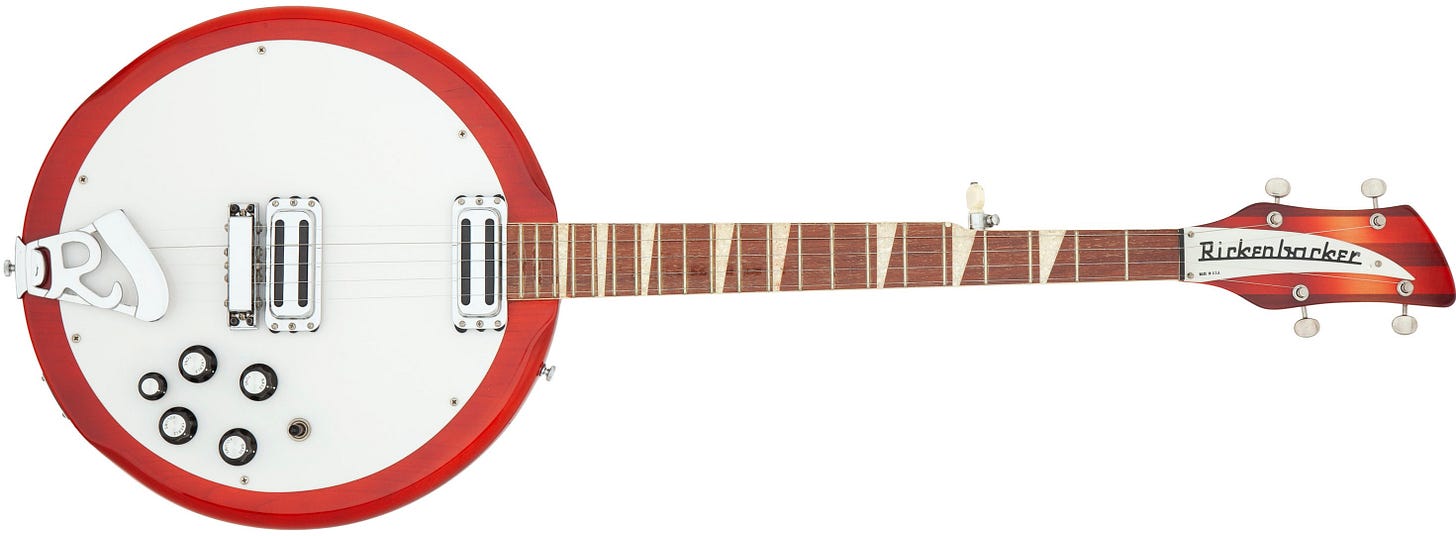
Let’s clear one thing up: no, there weren’t “only 50” made. We don’t know for sure how many there are, but it’s almost certainly LESS than 50. You see dealers say “1 of only 50 made!” all the time because somebody somewhere sometime said “probably less than 50 made”, and somebody misread that and said “only 50 made” and once it’s in print it must be true. But it is rare indeed—with almost certainly less than 50 ever made.

So let’s talk specs. The Model 6000 (its official designation) Bantar appeared in 1967, featuring a round two piece solid maple body with contoured top and checkered back binding, and a bound 21 fret 3 piece 5-string banjo-style set neck with crushed pearl triangle inlays. Scale length was 24 1/2”.
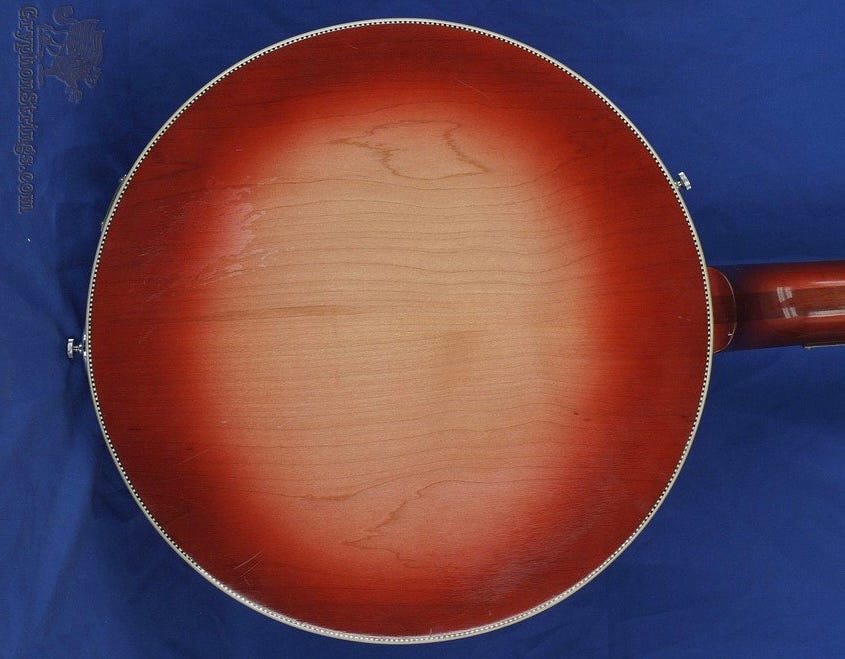
The paddle-style headstock had walnut wings, 4 Kluson Deluxe nickel bean button tuners, and a white backpainted truss rod cover.
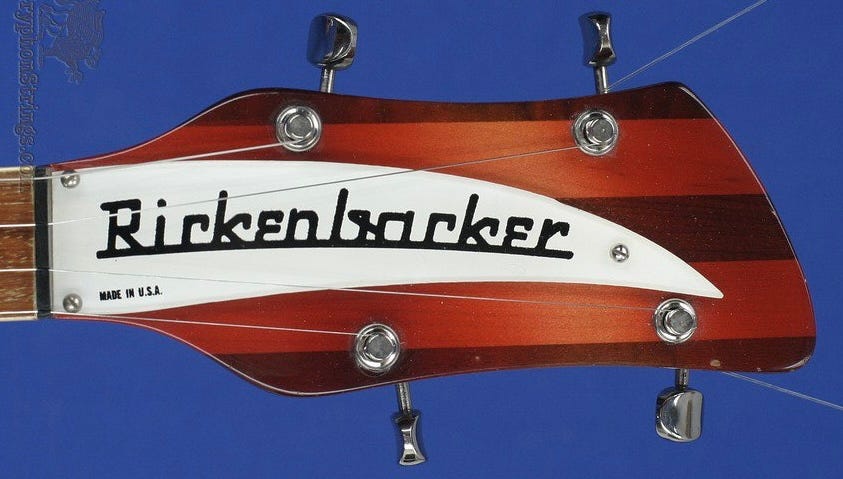
The 5th tuner—a Grover banjo tuner—was attached to the neck at the 4th fret. The slot of a flathead screw served as the nut for the 5th string!
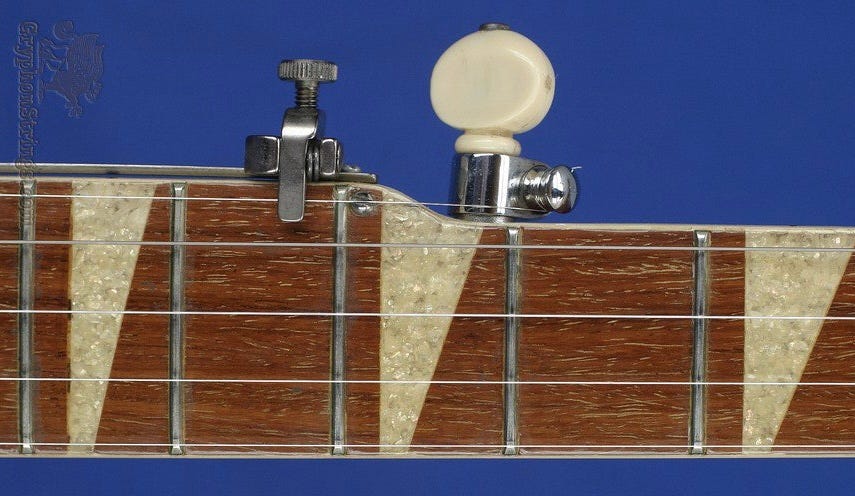
Almost the entire face of the Bantar was covered with a white pickguard to emulate a banjo head. Two toaster pickups were topmounted, and wiring was the standard pickguard mounted 5 knob/1 switch layout with side output jack.
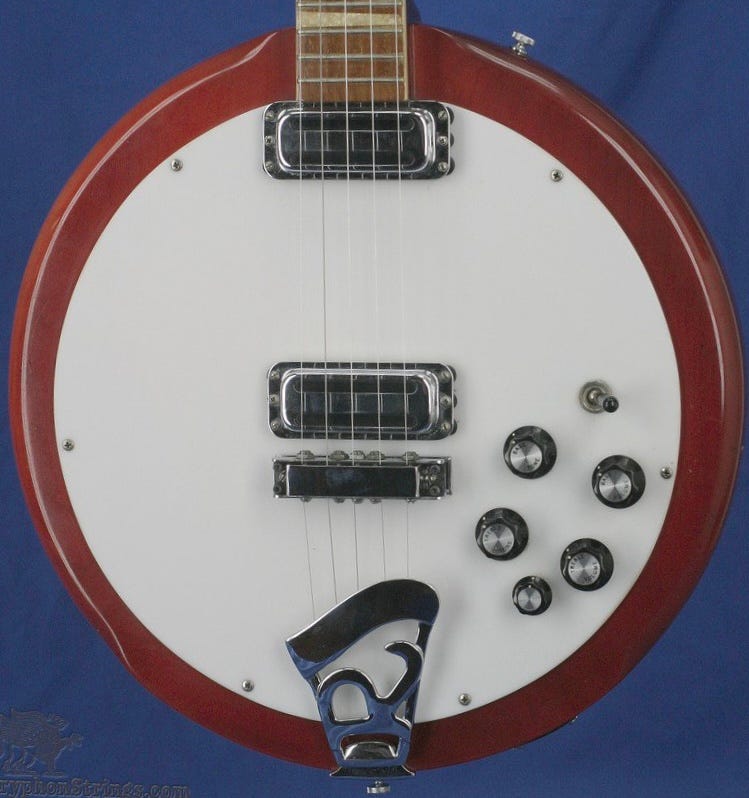
Both the bridge and the “R” tailpiece were modified to accept only 5 strings. The standard Rickenbacker bridge frame was drilled with only 5 oddly spaced holes instead of 6, and a custom 5 slot “R” tailpiece was cast for the Bantar.

That was the “stock” Bantar. There are at least 2 other variants out there, and those are rarer still. The first is a 4 string “tenor” Bantar.
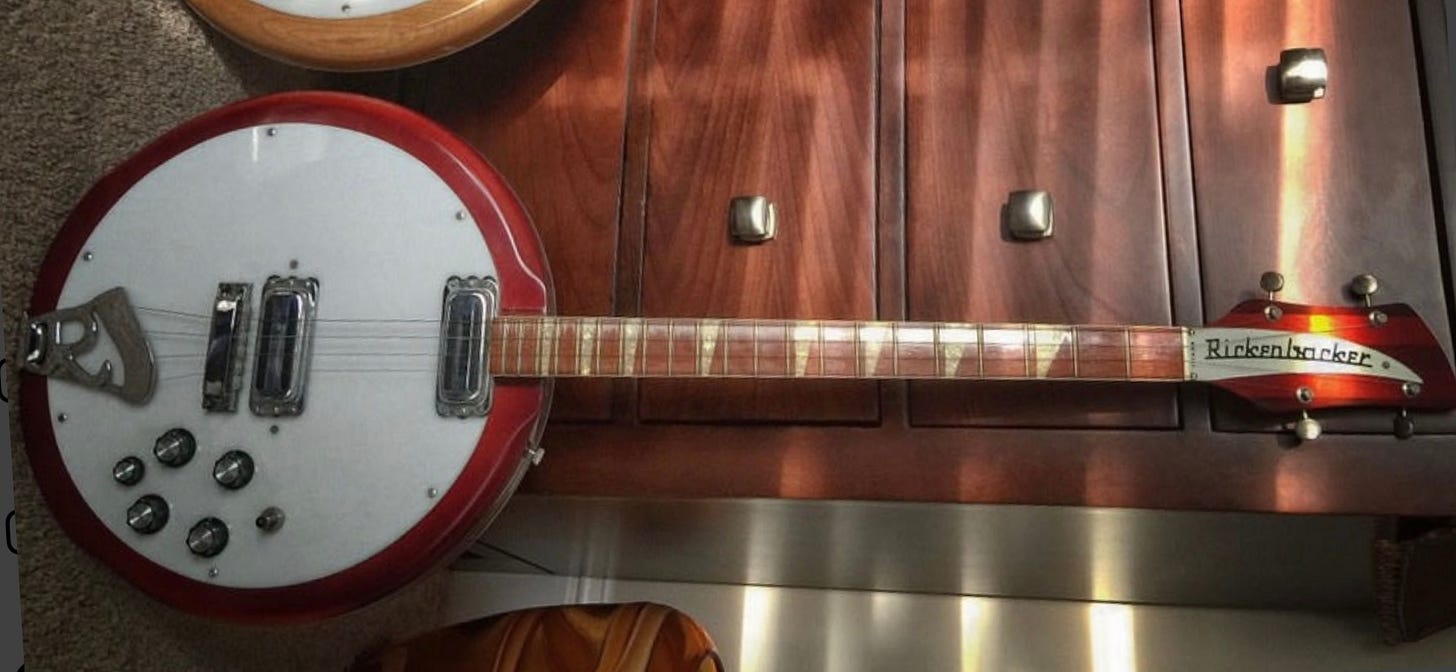
Unlike its 5 string brother, a standard 6 saddle bridge was used—with only the 4 center saddles in use—along with a 4 slot “R” tailpiece. Despite the 4005 bass also having a four slot “R” tailpiece, the Bantar got its own with thinner slots. I have only ever seen one example of this variant.
The second variant was probably the prototype version. I’ve found 2 examples of this version, one of which appears to be all original, and one that was finished out and sold in 1988. It’s quite different from the production model. While it has the same outline as the production model, think of the prototype version as a 450 and the production as a 620.
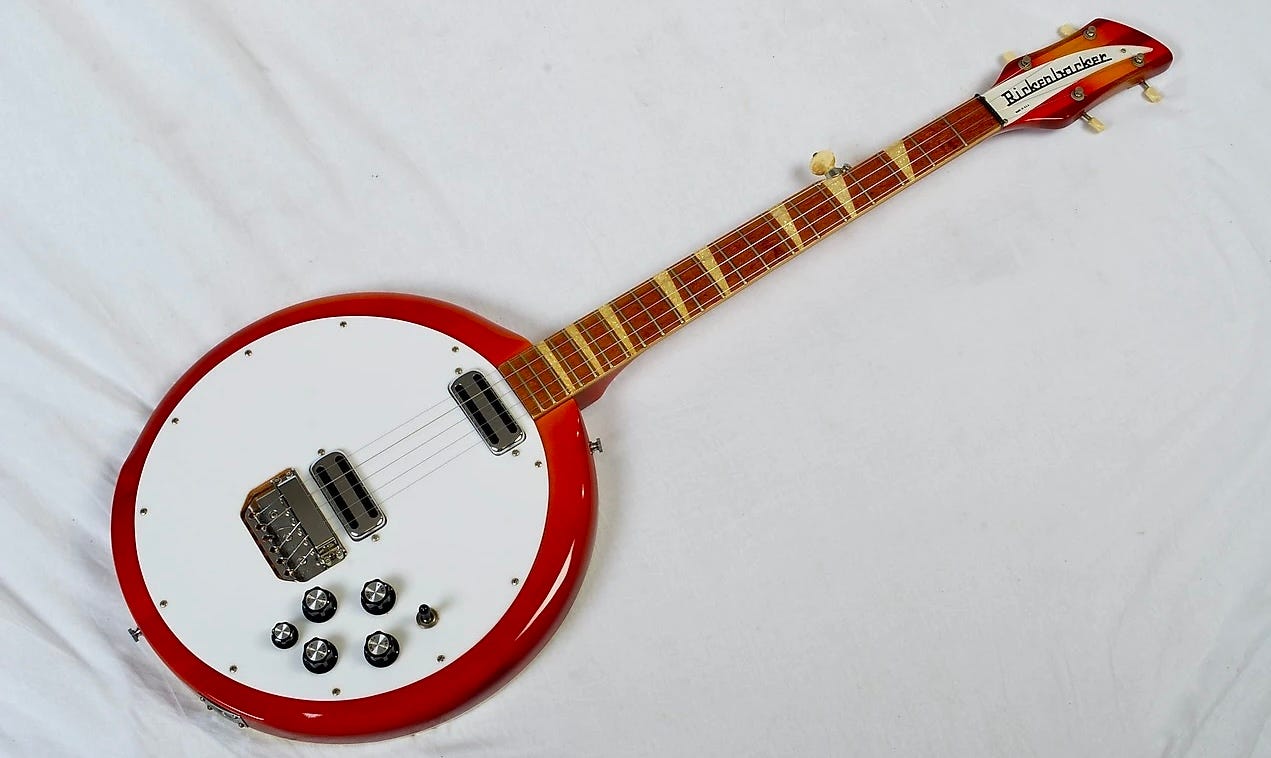
The lower deck height of this version meant that the pickups were recessed instead of top-mounted, as was the bridge. Note also the different neck join (and therefore pickup/bridge location/pickguard shape) on this 1967 original version:

On the 1988-finished example, instead of a modified bridge and tailpiece a standard 6 saddle bridge and bridgeplate were used, with only 5 saddles and holes in use.
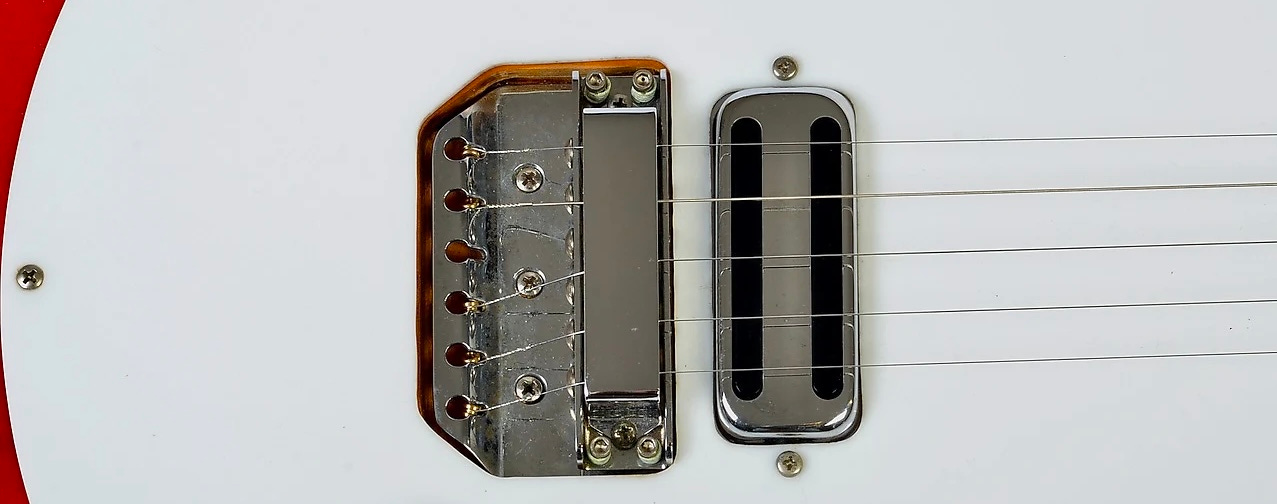
Production on the Model 6000 Bantar began in 1967, and ended in 1968–although it stayed on the pricelist through 1975. As already established, probably less than 50 were produced.
So what was even the point? While it kinda smacks of early 70’s desperation (hello, Lightshow and slanted frets!), when it appeared in 1967 the Rickenbacker factory was still running at full capacity so they weren’t trying to fill idle production lines. So why?
Well, it launched at the same time as the 6005 and 6006 Banjoline twins so I guess it makes sense in that context…but those three instruments don’t make sense in, well, the 1967 context. I can only assume that Eddie Peabody had one hell of a pitch deck!
Goes without saying they didn’t change the face of bluegrass…or rock and roll. Despite that, while we often say that rarity alone does not equal value, in this case it does, with clean examples regularly going for more than $10K. I guess rarity plus…weird? CAN equal value!




One can be seen in Rick Wakeman’s Old Grey Whistle Test spot at the 1:40 mark. https://youtu.be/Cdt0tWIR1Eg?si=A7L5UAZRCKf9v8Iu
Yikes that last shot High E is slightly exaggerated from mine but looks like a similar issue.I'm having with my 325C64 where the high e string is pushing against the edge of its roller instead of staying centered in that roller. Therefore giving it a "pinnng" instead of a "pinnnnnnnnng". Irritating... And unfixable, near as I can see, because the accent vibrato has to stay where it's at